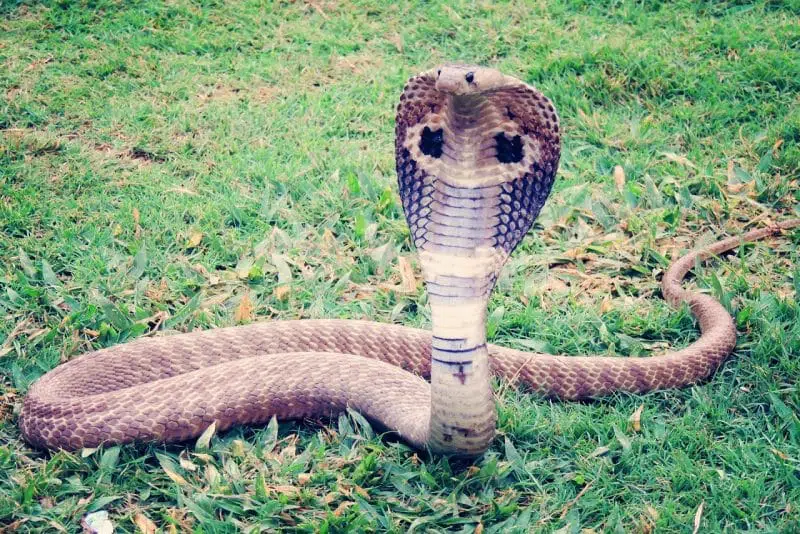A Tale of Two Fascinating Animals: Cobras and Rhinos
Animals have fascinated humans for centuries. Whether they are tiny insects or massive mammals, we are always intrigued by the diversity and complexity of life on Earth. Two such animals that have captured our attention are Cobras and Rhinos.
Despite being vastly different in appearance, behavior, and habitat, these two creatures share intriguing similarities and differences, making them both fascinating animals to study.
Cobras are venomous snakes belonging to the family Elapidae, found worldwide in tropical and subtropical regions. They are easily recognizable due to their long, slender bodies, flat heads, and distinctive hoods, which flare out when threatened.
Moreover, Cobras are known for their potent venom, which they deliver via hollow fangs in the front of their mouths. They are excellent hunters and use their poison to kill prey, mainly small mammals, birds, and other reptiles.
Rhinos, however, is a group of large herbivorous mammals belonging to the family Rhinocerotidae. They are known for their iconic horns and armor-like skin. Although they are typically solitary animals, they may form small groups.
Despite their differences, Cobras and Rhinos share several intriguing similarities and differences, which we will explore in more detail throughout this blog post.
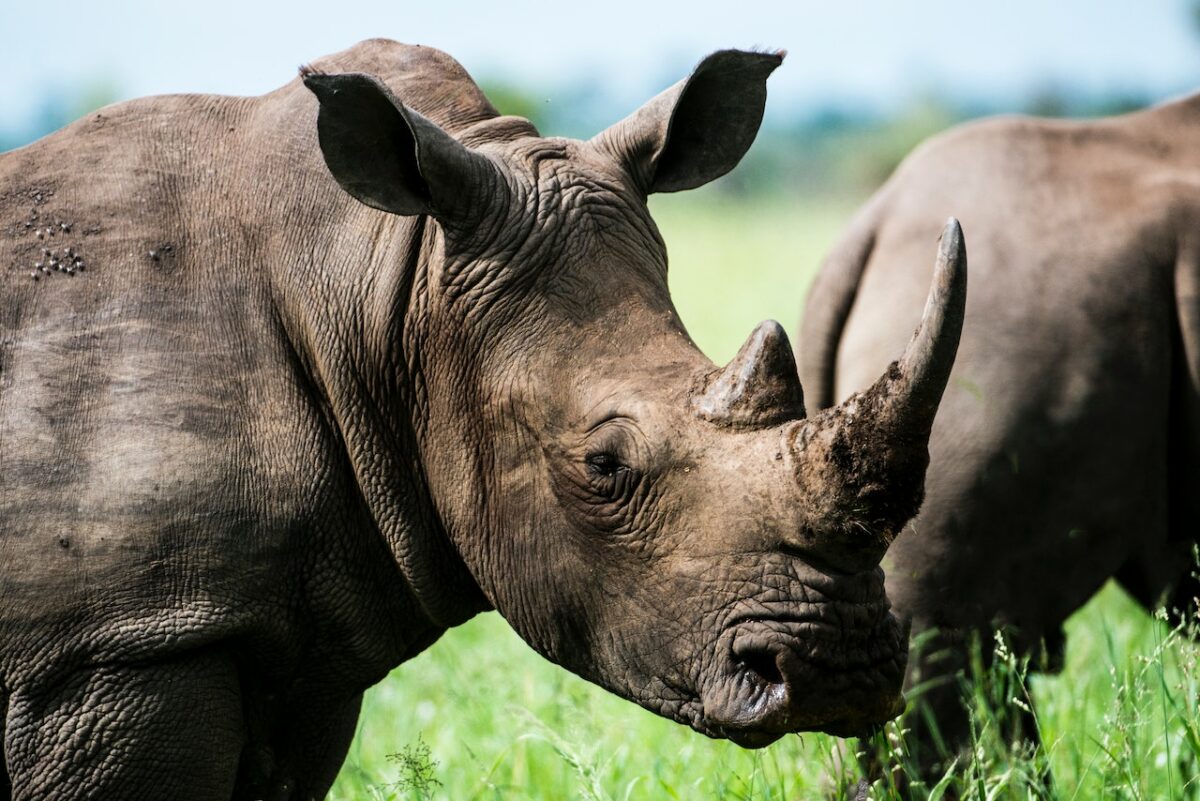
Want to jump ahead? Click below
Summary Table
| Cobra | Rhino | |
| Appearance | Long and slender, with a distinctive hood | Large and bulky, with armor-like skin and horns |
| Habitat | Tropical and subtropical regions, such as forests, deserts, and grasslands | Grasslands, savannas, forests, and wetlands |
| Social behavior | Solitary or sometimes form small groups | Mostly solitary, sometimes form small groups |
| Diet | Carnivorous, feeding on rodents, birds, and other small animals | Herbivorous, feeding on grass and vegetation |
| Predators | Birds of prey, snakes, and larger mammals | Humans, poachers, and larger predators |
| Conservation status | Some species are threatened or endangered due to habitat loss and poaching | Most species are threatened or endangered due to habitat loss and poaching |
| Interesting fact | Can spit venom at predators or threats | Can weigh over 2000 kg and run up to 40 mph |
Physical Characteristics Cobra vs. Rhino
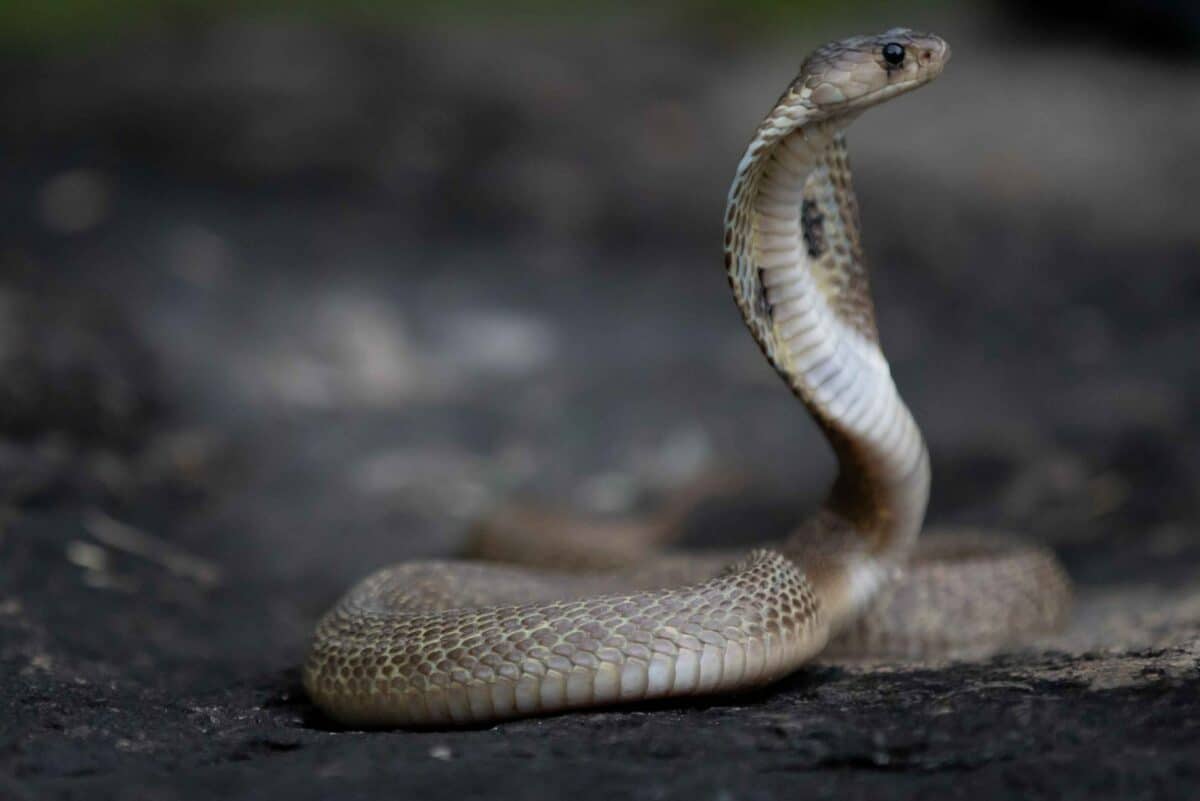
Cobras and Rhinos differ significantly in their physical characteristics. Cobras are typically long and slender, with an average length of 1-2 meters. They have flat heads, wide mouths, sharp teeth, and hollow fangs in the front.
The deadly species are known for their unique defense mechanism – flaring out their hood when threatened to appear bigger and more intimidating. The hood is formed by extended ribs behind the head and covered in scales, making it one of the most distinctive features of cobras.
Conversely, rhinos are large and bulky, with an average weight of around 1000-2000 kg. They have thick, armor-like skin that protects them from predators and parasites.
Rhinos have two distinct horn-like structures on their snouts made of keratin, the same material as our hair and nails. The horns vary in size and shape depending on the species, and some rhinos have a third, smaller horn on their forehead. Rhinos also have a prehensile upper lip that they use to grasp and tear vegetation.
In terms of color, cobras and rhinos have different colorations. Cobras come in various colors, including black, brown, green, and yellow, with distinctive patterns that help them blend into their surroundings.
Conversely, rhinos are typically gray or brown, with rough, uneven skin that looks like armor plating.
Although Cobras and Rhinos are vastly different animals, they possess unique and fascinating physical characteristics that distinguish them from other creatures.
Habitat and Distribution Cobra vs. Rhino
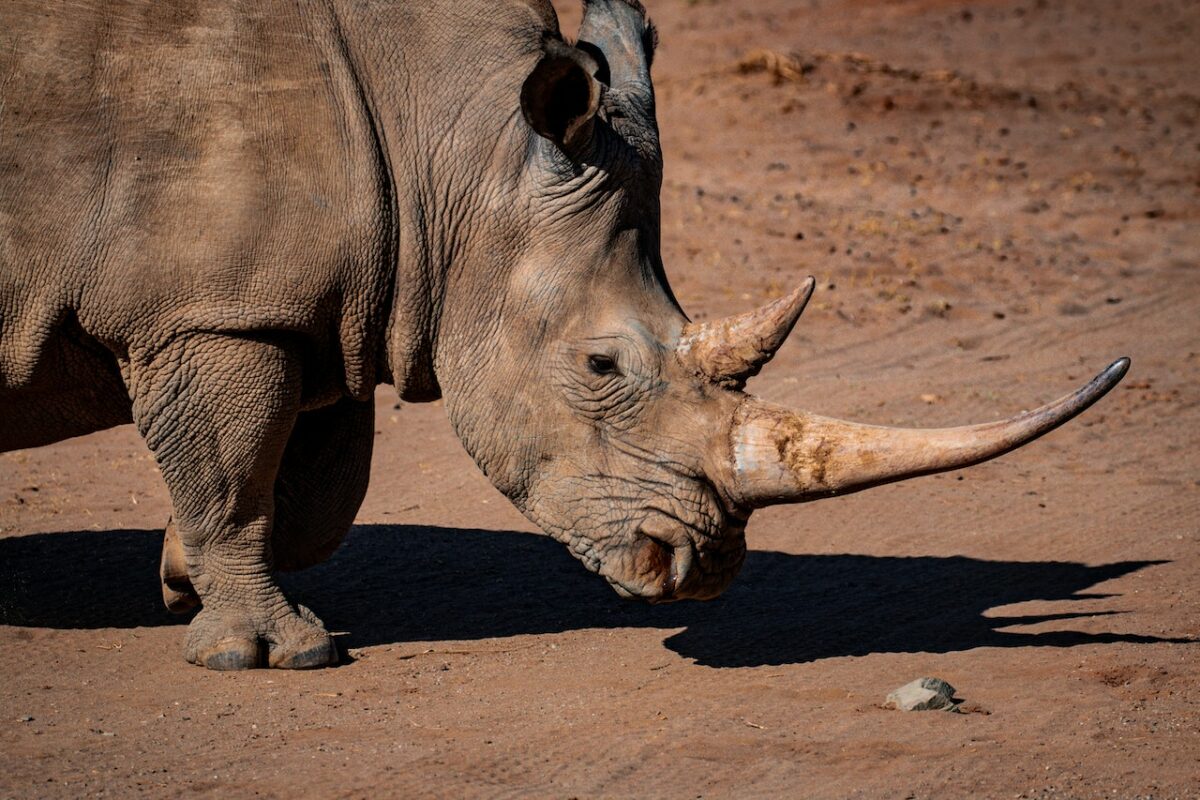
Cobras and Rhinos are found in different parts of the world, with distinct habitat requirements and ranges.
They are distributed across several continents, including Africa, Asia, and Australia. Cobras and Rhinos are commonly found in tropical and subtropical regions, such as rainforests, deserts, and grasslands. While some species of cobras prefer living in trees, others are ground-dwelling.
For example, the King Cobra, the world’s longest venomous snake, is found in Southeast Asia, primarily in the rainforests and swamps of India, Thailand, and Indonesia.
Rhinos, on the other hand, are primarily found in Africa and Asia. There are five different species of rhinos, with the Black and White Rhino found in Africa and the Indian, Javan, and Sumatran Rhino found in Asia.
Rhinos are typically solitary animals known for their preference for grasslands and savannas, although they can also be found in forests and wetlands. They can also form small groups, but that’s far less prominent in their behavior than a solitary life. Rhinos also have a wide range of home territories, with the White Rhino found in several African countries.
Both Cobras and Rhinos are highly adaptable animals that have survived and thrived in different habitats worldwide. However, they face several threats impacting their populations, as we will explore in the next section.
Behavior and Diet Cobra vs. Rhino
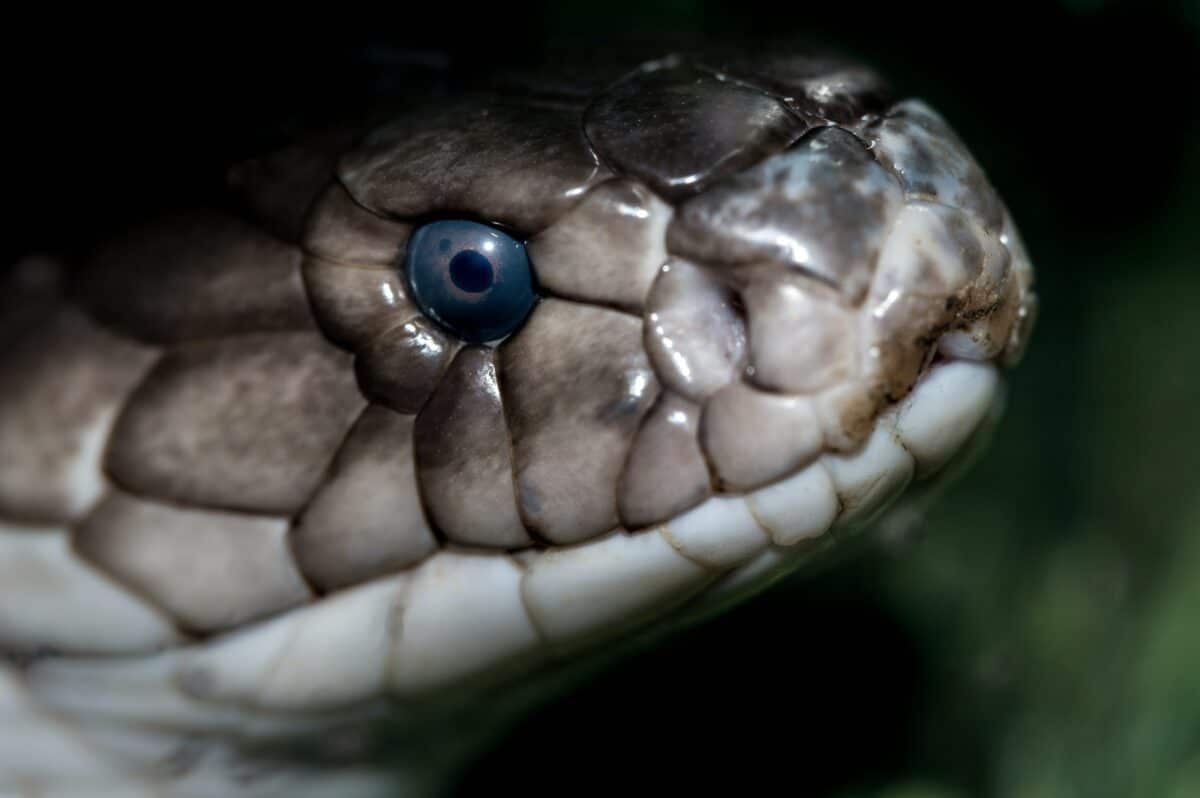
Cobras and Rhinos have distinct behaviors and diets. Cobras are solitary and territorial animals, active during the day. They use their venom to immobilize small mammals, birds, lizards, and other snakes, and their raised hood is a defense mechanism.
Rhinos, conversely, are herbivorous animals that graze on grasses, leaves, and shrubs, using their specialized digestive system to break down rigid plant material efficiently.
They are primarily active during the day and may form small groups, using their keen sense of smell and horns for defense. Despite their unique traits, both animals face threats from human activities, endangering their populations. The forthcoming section will address the conservation status and threats Cobras and Rhinos face.
Conservation Status and Threats Cobra vs. Rhino
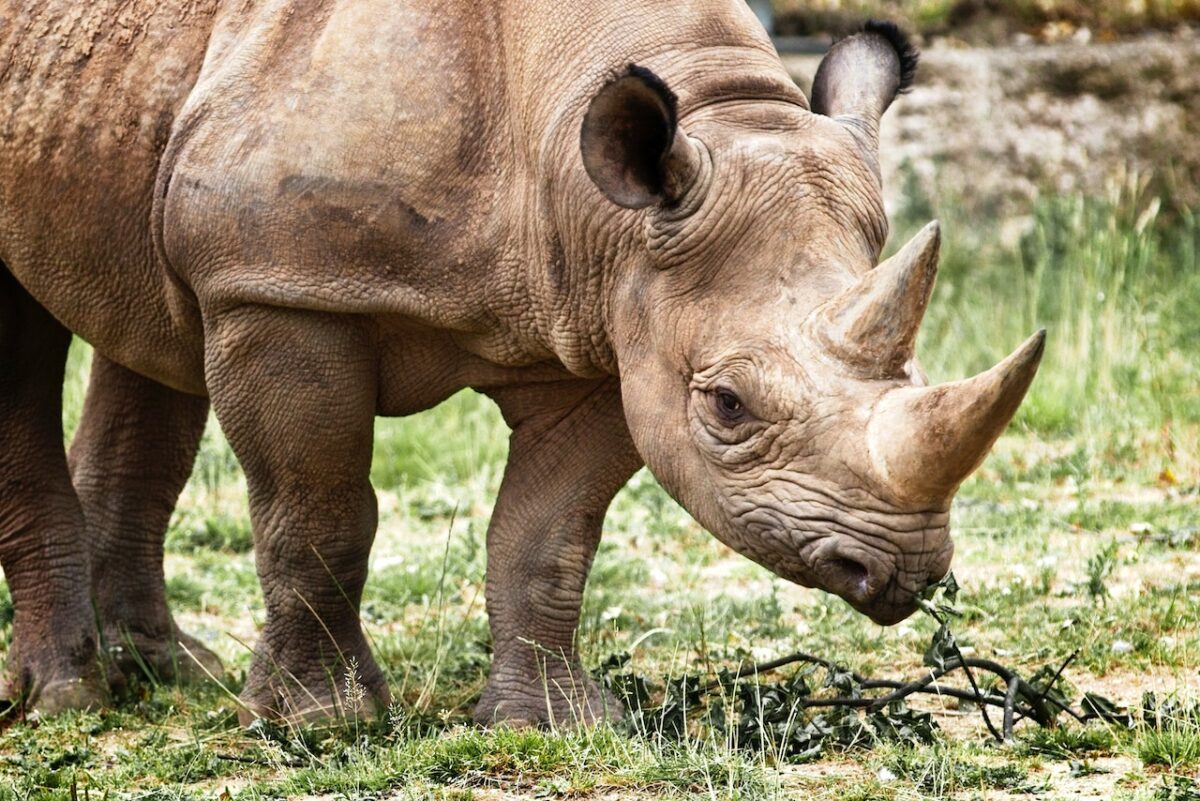
The endangerment and vulnerability of various Cobra species, including the Indian and Chinese Cobras, result from human activities. Human activities also threaten Rhino populations. Habitat loss and indiscriminate killing are the major threats to their people. Cobras are also hunted for their skin and venom, used in traditional medicines and cosmetics.
Rhinos are even more critically endangered, with poaching the biggest threat to their populations. Poachers target the horn due to its perceived medicinal value and status symbol. Habitat loss, fragmentation, and climate change also contribute to their decline.
Efforts to protect Cobras and Rhinos include conservation programs by organizations such as the WWF and the WCS. Governments and local communities are taking measures to combat poaching and illegal wildlife trade.
In addition, awareness campaigns are being conducted to educate people about the importance of preserving these animals and the environments in which they live. It is crucial to take action to protect these fascinating animals before they disappear from our planet forever.
Wrapping Up with Cobra vs. Rhino
While Cobras and Rhinos may differ significantly in many aspects, they are both valuable and captivating creatures that play essential roles in their respective ecosystems. By understanding their behaviors, diets, and threats to their populations, we can appreciate their importance and work towards protecting them.
Conservation efforts by organizations like the World Wildlife Fund (WWF) and the Wildlife Conservation Society (WCS), as well as actions by governments and communities, can make a significant impact in preserving their habitats and reducing poaching and other human activities that harm them.
As individuals, we can contribute by raising awareness about their plight and supporting conservation initiatives. By doing so, we can ensure a brighter future for these remarkable creatures and the biodiversity of our planet as a whole.
Thanks for following along with me! I hope you enjoyed reading about the pros and cons of two very different terrestrial animals. Next up is Gorilla vs. Cobra and Meet Puma and the Rhino.
- Bald Eagle Family Expand Their Nest In California - April 24, 2024
- Firefighter Saves Abandoned Kittens Found Cuddling In Hoses - April 24, 2024
- Dolphins Get High Playing Catch With A Pufferfish - April 24, 2024

